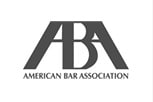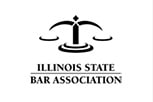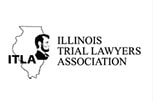Bad road design contributes to many fatal accidents

Most drivers would likely blame driving under the influence, driver distraction or vehicle defect as the top reasons people die in car accidents, but they would be mistaken. According to research reported on by the Washington Post, more than fifty percent of fatal collisions on roads in Illinois and across the United States can be attributed in part to bad road design. The 18-month study addresses deaths that derived from conditions such as narrow bridges and trees that are situated too close to the shoulders. The report stated that these types of fatalities exceed those from drunken driving, operating without a seat belt and speeding.
The high cost of old roads
The study cited that poor highway and road conditions contributed to 22,000 deaths, costing $217.5 billion per year. Alcohol-related deaths cost $130 billion, while driving without a seatbelt caused damages of approximately $60 billion. An accident lawyer in Chicago could corroborate The Washington Post’s report that nearly of 42,000 people die in vehicle crashes each year. While regional governments experience a chronic lack of funds for fixing and updating road and traffic infrastructure, the costs of ignoring poor design is loss of human life and significant environmental and property damage. The FHA reports that sight distance improvements alone would reduce the fatality rate by 56 percent. Officials estimate that for every $100 million put into improving highway safety, 145 road fatalities could be avoided over a 10-year span.
An antiquated network
For decades the highway system in the United States has been hailed as a model of modern transportation design. Straight, wide and well-maintained interstates have allowed the trucking industry and cross-country vehicle travel to flourish. However, the interstate system accounts for a mere 45,000 miles of the 3.9 million miles of road across the country. Twisty and hard-to-maintain back roads canvas the nation, and are a vestige of bygone days before SUVs. Some rural roads maintain dimensions that harken back to horse and buggy days. Particular, and often fatal hazards to drivers on back roads and off the interstate include the following:
- Narrow shoulders – rollover dangers from sharp drop-offs
- Extremely crooked and winding driving paths – inadequate sight lines, difficult to maneuver
- Lack of breakaway signposts and light poles – poor visibility
- Lack of rumble strips and guardrails – inadequate boundary markers for drivers
- Dull pavement markings – unclear boundaries, danger to pedestrians
Advocates for increased spending on road improvements, such as the American Society of Civil Engineers, state that improving these conditions would help avoid thousands of deaths each year.
Federal guidelines vs. state standards
The Federal Highway Administration’s, “Designing Safer Roads, Practices for Resurfacing, Restoration, and Rehabilitation,” addresses a study of the financial pros and cons of applying modern highway design toward nonfreeway projects. These projects are commonly known as 3R projects, or those involving resurfacing, restoration and rehabilitation. The study showed that states generally design these roads with lower criteria than is outlined by federal recommendations. The FHA notes that adhering to the standards in the American Association of State Highway and Transportation Officials Green Book of geometric highway design may not guarantee driver safety. However, an accident lawyer in Chicago would be familiar with the current dangers of road design defects on state roads.
Roads wait for funding
Many of the derelict roads in Illinois and throughout the Unites States are waiting for government funding to be repaired or restored. Cathy St, Denis, spokesperson for the FHA, stated that “Safety is our top priority, and we agree that repairing and improving our highways will help save lives.” However, securing the money to fix even dangerous road conditions can be an uphill battle for state and local governments. The recommendation in the study reported on by the Washington Post are far more ambitious that standard 3R projects. In general, major in-state infrastructure improvements receive funding from the Highway Safety Improvement Program, which concentrates on reducing the number of deaths that occur on public roadways. For other projects, Illinois and other states often focus on finding and fixing those issues that fall within a limited budget.
According to the FHA, the focus for 3R projects is to ameliorate unsafe road conditions through pavement and joint repair, minor widening of lanes and shoulders, minor changes to curves, removal of hazardous obstacles and bridge repair. An accident lawyer in Chicago would be familiar with the ongoing dangers of poor signage, inadequate sight lines and other structural features that may not be addressed through minimal maintenance.
Pressure on roadways to increase
According to a report by TRIP, a national transportation research group based in Washington, D.C., highway and road travel in the United States rose 1.7 percent in 2013, and has continued to rise since. The report projects a 72 percent increase in commercial truck travel between 2015 and 2030. These increases are likely to put added stress on roads that already suffer from chronic under-funding and inadequate maintenance. Bad or antiquated road design threatens to put more drivers in danger of being involved in an injurious or fatal crash on interstates and on other routes.
Seek professional counsel
Unfortunately, the typical driver is likely to travel many roads that do not meet high standards for traffic safety. If you have been involved in a vehicle accident that you suspect was due to bad road design, an accident lawyer in Chicago may be able to help you take the next step to recovering your losses.




